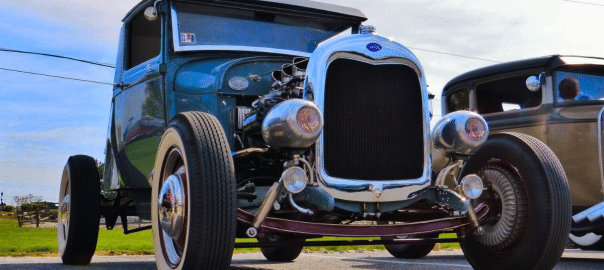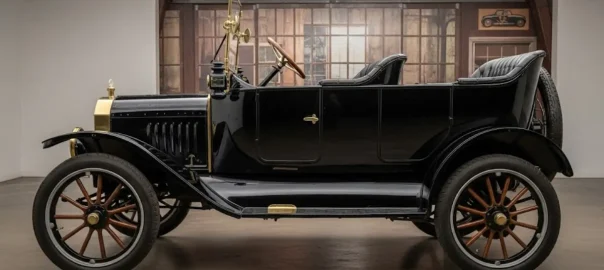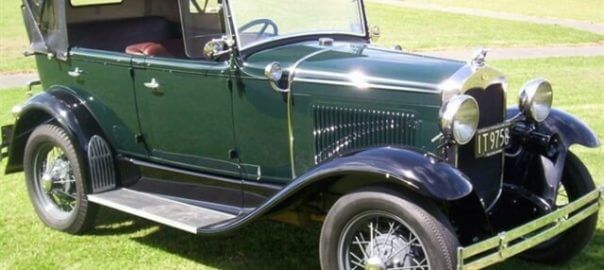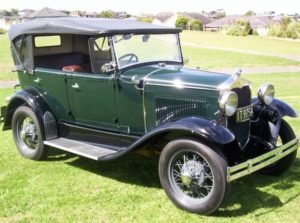What I’ve Learned After Years Around Vintage Cars: The Details You Don’t Read in Manuals
You can study vintage cars for years. You can read books, scan auction listings, and follow every registry’s classification. But some of the most valuable lessons come from standing next to these vehicles, running your hand along an original door panel, or watching a seasoned restorer piece together something no longer made. That is where I have spent a good part of my life — not just reading about vintage cars, but listening to them, watching them, and learning from the people who truly understand what they are.
Here are a few things I have come to believe about vintage vehicles. You will not find most of this in a handbook. These are the kinds of lessons that come from being around these machines long enough to know what matters and what only looks impressive on paper.
1. Some cars talk louder when left untouched
I have seen restored cars that sparkle under the lights. Chrome perfect. Paint flawless. Interior stitched with precision. But some of the most compelling vintage cars I have ever encountered still had their dust on them. They had wear in the seat bolsters. There were dents that no one had rushed to fix. And those details told a fuller story than most restorations ever could.
Not every car needs a second life in showroom condition. Sometimes, its first life is still speaking. You just have to know how to listen to it.
2. Original parts are not about showing off — they are about continuity
There is something grounding about seeing a 1920s steering wheel still fitted to its original column. It connects you to the engineer who built it, the driver who held it, and the hands that maintained it across generations. I have always believed that originality should never be reduced to a bragging point. It is not about status. It is about respect.
Replacing a part with a modern equivalent might make the car run better. But when you drive a vehicle with its own components still in place, there is a sense that time folds a little.
3. “Rare” means nothing without context
I have had people wave paperwork in front of me, saying their model was “one of only fifty.” That means very little unless the condition, provenance, and desirability line up. I have seen supposedly rare cars go ignored at shows because no one cared about that model. And I have seen modest cars with strong documentation draw serious attention because their story meant something.
Collectors want rarity that matters. That includes verifiable history, smart preservation, and often the right period-correct parts. Not just a claim printed on a laminated spec sheet.
4. Restoration done properly is often invisible
You can spot rushed work from metres away — misaligned trim, incorrect fasteners, over-polished metals. But true restoration is subtle. I once had to crawl under a car to confirm it had been restored at all. Everything looked factory-correct. No part shouted for attention. That kind of work takes patience, deep sourcing knowledge, and restraint.
The best restorers do not show off. They recreate. That is harder than most people realise.
5. Patina is not damage — it is memory
There is a fine line between deterioration and character. I have had long conversations about whether to repaint a bonnet or leave it with that aged surface. My rule is this: if the wear adds to the story and the car is structurally sound, keep it. Not every crack or fade needs correction.
We do not wrinkle a photograph to make it look newer. We should not always scrub down a car to erase its age.
6. You learn more from a quiet collector than a loud one
The loudest voices in vintage car circles are often the least experienced. The ones who quietly walk the show field, ask simple questions, and check part numbers without making a fuss — those are the people I tend to watch. They know what they are looking at. They do not need to prove it.
I learned early on that reputation in this world is built slowly. It comes from sharing knowledge without ego, helping others source authentic pieces, and respecting different stages of the journey.
7. Your supplier is part of the car’s history
Every piece you fit into a vintage car becomes part of its ongoing story. I have always taken great care in choosing where my parts come from. One mistake — the wrong bracket, a wrongly dated fuel cap — and the whole vehicle feels off. That is why I work with suppliers who know more than just what fits. They know what belongs.
A good supplier does not just fill an order. They understand that sourcing for authentic car restoration means matching tone, era, and intention. That is why I trust teams like Veteran & Vintage Spares & Repairs Ltd. They speak the same language as the car.
8. Paper trails matter more than opinions
I once saw two identical cars on display. One was priced twice as high. The difference? Documentation. Receipts, ownership records, verified chassis numbers, service logs — these form the spine of a car’s value. Anyone can tell a story. Paper proves it.
When you restore or buy a vintage car, gather everything. Keep photos, notes, even correspondence. Because someday, someone will want to know what you did — and why.
9. Every vintage car has its best version of itself
Some vehicles are not meant to be show winners. Others are not comfortable as daily drivers. But each vintage car has a best version of itself — the point where it is at its most honest and enjoyable. That could be a working restoration with light patina or a concours-ready machine detailed down to the bolts.
I always advise owners to find that balance. Do not chase perfection. Chase truth. What does the car want to be? What would the original builder smile at today?
10. The moment you start listening, the car teaches you
Vintage cars do not speak in code. They tell you what they need. A sound. A feel in the pedal. A vibration in the frame. Over time, you begin to understand them like an old friend. That is not something you learn in a week. It takes driving, tinkering, and asking questions that no modern service manual can answer.
Once you stop trying to control the car and start working with it, that is when you understand why this hobby matters so much to so many people.
The Value Lives in the Right Choices
I have been around vintage cars long enough to know that every one has a story that can outlive its owner. These vehicles are not just collectable objects. They are mechanical, memory-driven, restored, admired, and sometimes misunderstood. You do not have to be a master mechanic to appreciate them. But you do have to be willing to learn, to listen, and to work with the right people who treat each detail like it matters.
That is why who you work with matters. It is not about filling gaps with any part that fits. It is about finding the part that belongs. If you are restoring something worth remembering, give it the care, the curiosity, and the craft that made you fall in love with it in the first place.
I still do—every day.




